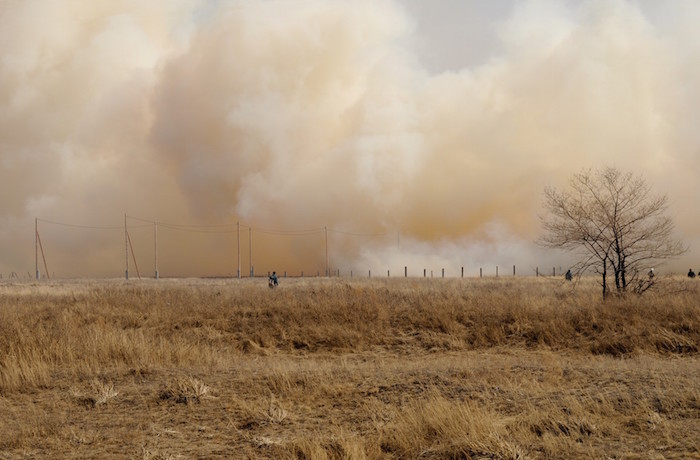The past decade has seen an unusual number of large, stand replacing fires in the western forests of the United States. They are unusual in that tree ring data from the time period 1500-1900 shows a trend of low intensity fires occurring on a frequent basis that helped to maintain open stands and preclude large stand replacing fires.
Forest fires in western ponderosa pine forests have increased in size and severity and have garnered substantial media and political attention. The US now spends over $1.5 billion annually on fire management and has adopted the Healthy Forest Restoration Act (HFRA) in an effort to curb fires. Many people believe that decades of fire suppression have created this current crisis. The HFRA prescribes thinning as the management tool to reduce fire loads, reduce catastrophic fires, and to reestablish ecological balance.
However, a group of researchers analyzing post fire related deposits, or debris flows, have proposed that fire suppression alone may not be the only culprit for the rise in catastrophic fires this century. Establishing a chronological record of erosion and debris flows over the past 8,000 years has uncovered a climactic pattern to fire history.
Using charcoal data found in these debris flows, the researchers correlated such flows with climate records. They found that colder periods were characterized by low intensity fires and small debris flows, whereas warmer periods experienced more catastrophic fires, followed by large debris flows. Cooler, wetter conditions maintain moisture in the canopy of trees and produce understory growth that lead to low intensity fires and maintenance of open stands. Warmer, drier conditions, particularly extended periods of drought, cause canopy moisture to decrease to critically low levels and increase the likelihood of catastrophic fire.
During the Medieval Climatic Anomaly (1050-650 years before present) warm temperatures led to multi-decade droughts, severe fire conditions and large debris flow events. In contrast, the Little Ice Age (from 1500-1900) produced high frequencies of low intensity burns. Current management strategies to reduce catastrophic fire, including the HFRA, use the Little Ice Age conditions as the baseline. Climate change this past century has created much drier conditions and a higher frequency of catastrophic fires that thinning will not likely be able to reduce.










One Response
0.5